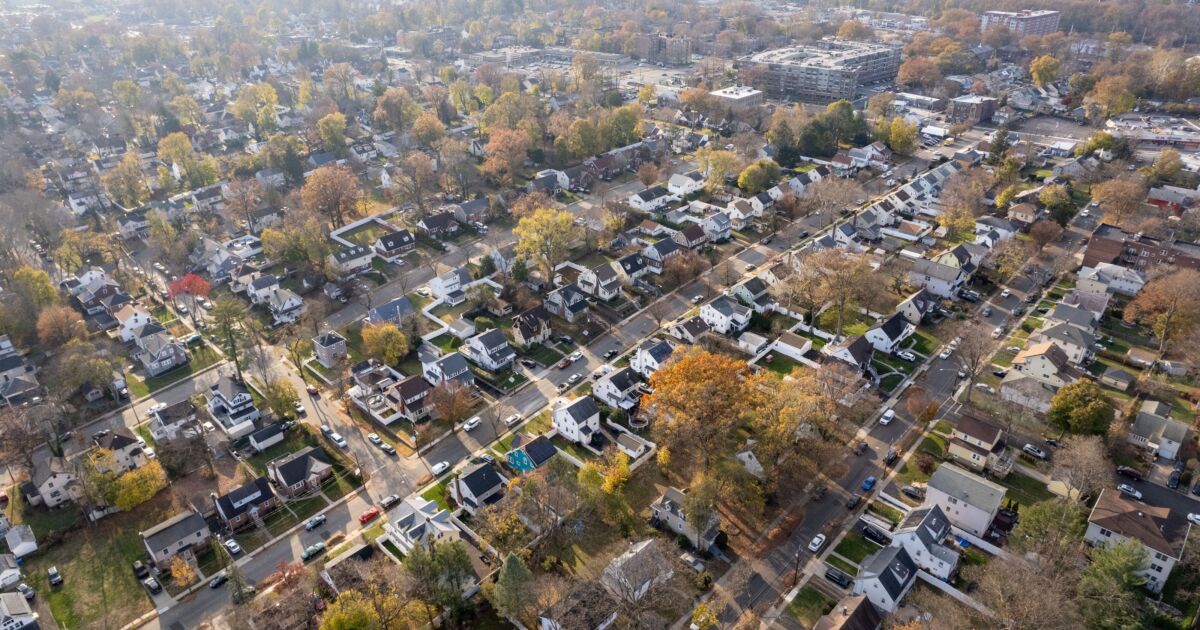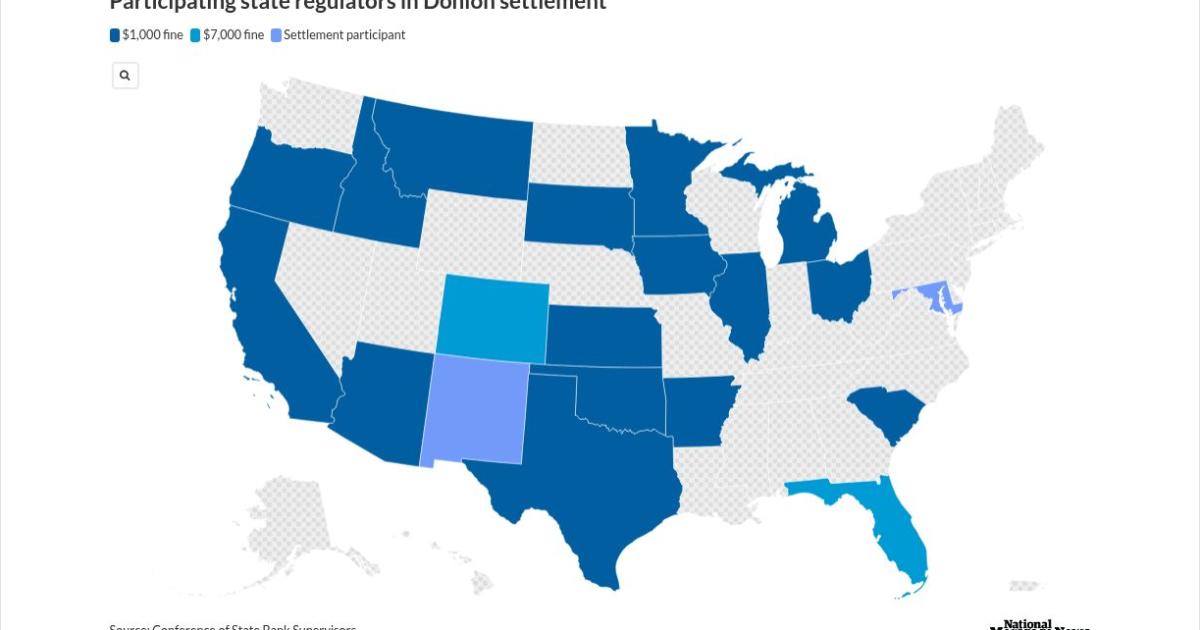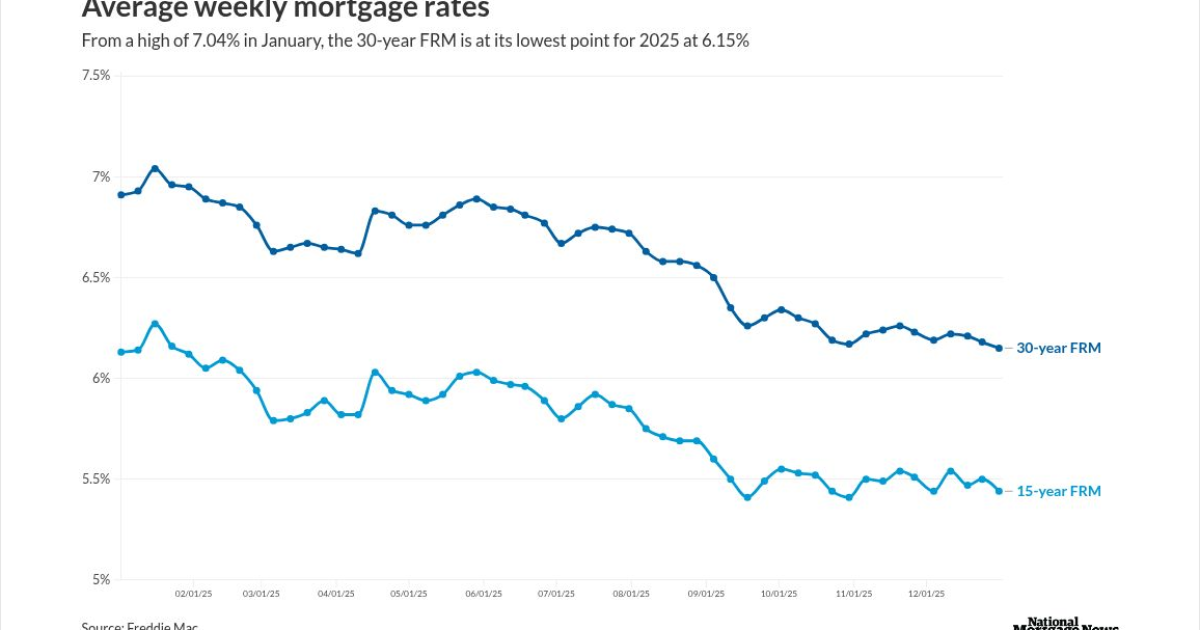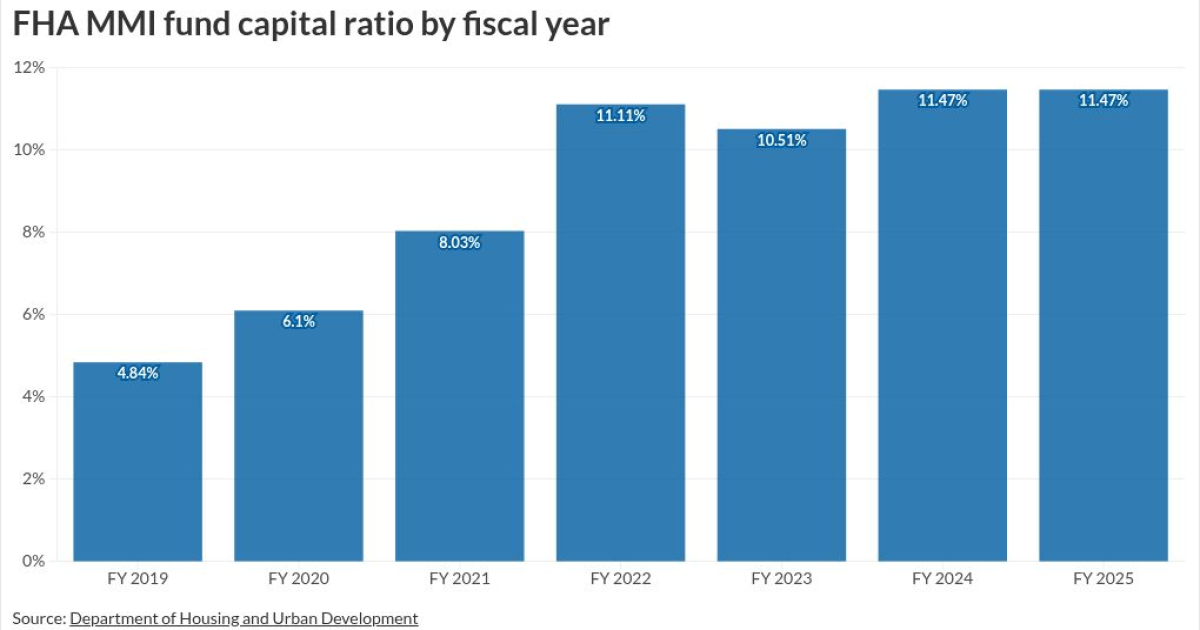
Mortgage rates
The government-sponsored enterprise's Primary Mortgage Market Survey found the average interest rate for the 30-year fixed-rate loan at 6.69% for Jan. 25, up from 6.6% the prior week and
However, the 15-year FRM average jumped 20 basis points week-to-week, to 5.96% from 5.76%, after declining for five weeks in a row. For the same period in 2022, the 15-year averaged 5.17%,
Still, rates remaining in that current range is a good indicator for normal seasonal purchase patterns.
"Given this stabilization in rates, potential homebuyers with affordability concerns have
The rate news does not bake in the unexpectedly good gross domestic product report issued on Thursday morning. While 3.3% for the fourth quarter was slower growth than the prior three months, it was better than forecast.
ZIllow reported a 2-basis-point increase in the average for the 30-year FRM, to 6.45% at mid-morning on Thursday from Wednesday. It is 10 basis points higher than the average for the prior week.The benchmark 10-year Treasury, one of the considerations in pricing mortgages, went from a low of 4.09% on Jan. 18 to a high of 4.20% the next day, and has been up and down in that range ever since.
But following the GDP report, the 10-year yield did fall 4 basis points from its previous close to 4.14% just before noon on Thursday morning.
GDP came in at 3.3%, down from 4.9% during the third quarter. However, Fannie Mae forecast just 1.2% for the period, while the Mortgage Bankers Association projected 0.9%.
While
In a statement issued following the GDP release, Mike Fratantoni, the MBA's chief economist, noted that the growth is consistent with the strength in employment, and that is good news for housing as it should sustain robust demand.
It also pointed to further reductions in the inflation rate, which should keep the Federal Reserve on target to cut short-term interest rates. The MBA's January forecast was virtually unchanged for 2024, with total production of slightly over $2 billion.
"For the broader economy, 2023 was a much better year than we had expected, even as the housing and mortgage markets were stuck in the doldrums," Fratantoni said. "While we still anticipate that the economy will slow in 2024, this strong momentum in the fourth quarter makes a precipitous decline less likely."
Taking a different view is Sophie Lund-Yates, the lead equity analyst at United Kingdom-based investment banking firm Hargreaves Lansdown, who said people shouldn't expect the Fed to "take an ax" to interest rates.
"For now it seems likely the U.S. economy has a touch too much wind in its sails for the Federal Reserve to change course," Lund-Yates said in a statement. "That could lead to some upset in the markets, which remain optimistic that cuts are on the way sooner rather than later."
The markets have expressed some concern about when the Fed might start cutting rates. Expectations are for seven reductions this year, but Fannie Mae is now predicting just four drops, Chief Economist Doug Duncan told National Mortgage News earlier this week.



